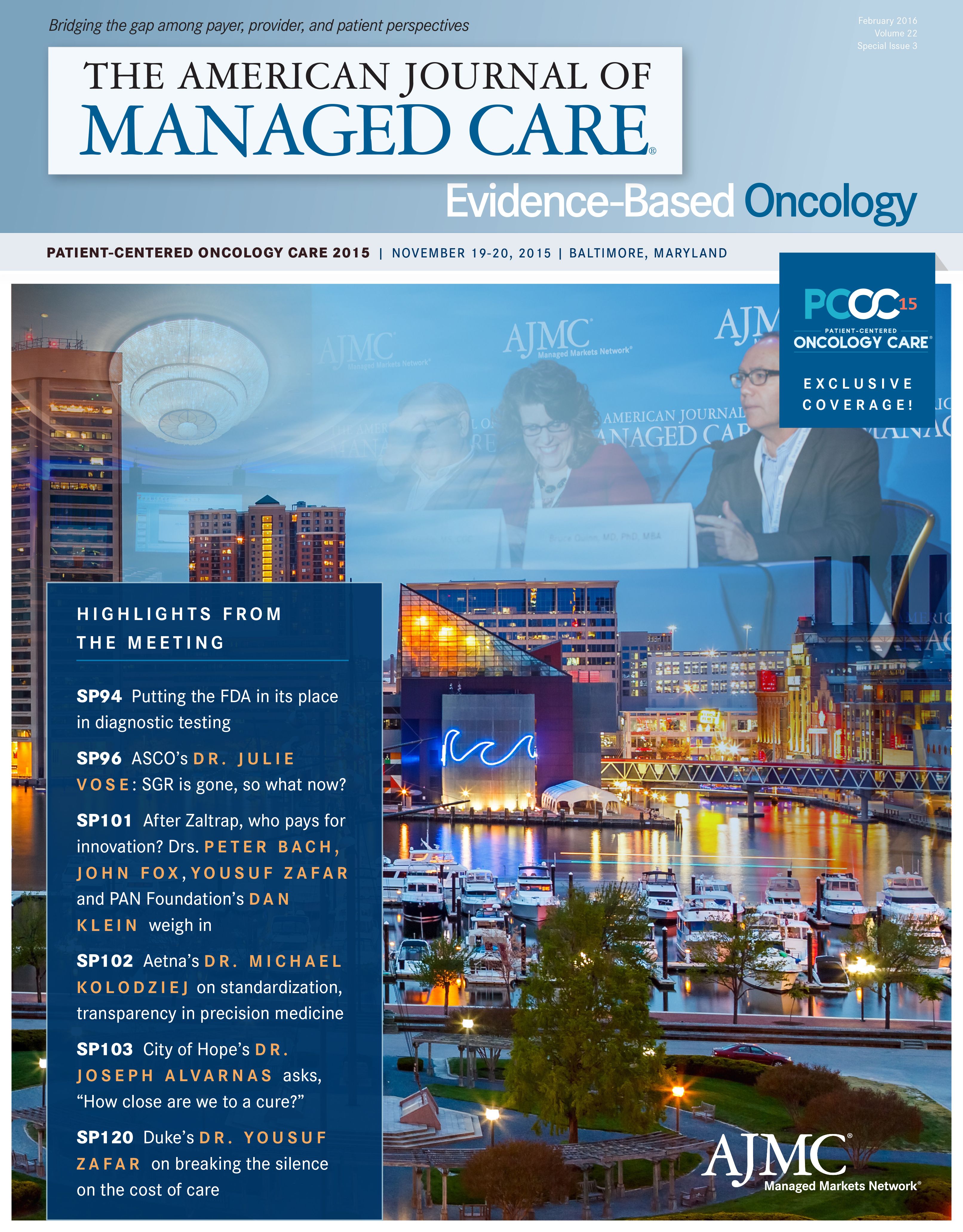- Center on Health Equity & Access
- Clinical
- Health Care Cost
- Health Care Delivery
- Insurance
- Policy
- Technology
- Value-Based Care
Becoming a More Educated e-Patient
After being diagnosed with a rare blood cancer, Jack Whelan has used his electronic connections to be more involved in his care.
Author and advocate, Jack Whelan, recounted his experiences as an individual living with cancer, and stressed the importance of patients’ in­volvement in their treatment during his talk at the 2015 meeting of Patient-Cen­tered Oncology Care.
Whelan was diagnosed with a rare in­curable blood cancer—a type of lympho­plasmacytic lymphoma called Walden­strom macroglobulinemia (WM)—around 2007. His symptoms included exhaustion after any physical exertion, nose bleeds, and some evidence of neuropathy. With an outlook of living 5 more years and no treatment or standard of care available, Whelan decided he would become an e-patient.
Being an e-patient, Whelan uses his electronic connections to educate himself about his condition and become more in­volved in his healthcare. He believes pa­tients should be educated and equipped to handle their diagnoses, considered equals with their physicians, capable of asking relevant questions, and willing to make choices about their care.
As Whelan was prescribed various drugs during clinical trials, he measured his own biomarkers and noted how he re­sponded to his therapeutics, tracking his disease progression. “[W]hen I saw these relapse periods coming, that’s when I could raise my hand, go to my oncologist, and say it’s time to move on to another drug,” Whelan explained.
During this period of trial and er­ror, Whelan realized the importance of monitoring the data of clinical trials in real-time. Rather than spending exces­sive time on biomarker analysis, Whelan wants to move away from batch data and examine patient data and responses.
“We need to move those companion diagnostics out into the clinics,” he said. “We actually have to test the safety and efficacy of the drug at the time it’s given to the patient.” In this case, Whelan pro­motes a genomics-based therapy in order to determine, ahead of time, which drugs will be safer and more effective.
Whelan identified 2 key obstacles in the communication approach of the therapeutics industry, which he consid­ers to be research-centered, rather than patient-centered. First, distribution does not facilitate communication between patients and the therapeutics developers. He suggested refocusing on the patient’s experience in order to promote a free flow of information between the patient and the developer, rather than relying on an intermediary. Whelan emphasized that he does not believe patients should decide how everything is done, but he does view them as a valuable component of effective healthcare.
The second obstacle is the industry’s prevailing risk-averse attitude, which also hampers the free flow of informa­tion. Targeted agents in clinical trials may be safer, and more effective, than conven­tional chemotherapy, Whelan said, and so regulators should strive to be bolder and move forward.
Another growing issue with the health­care industry is financial toxicity, Whelan added. There is major discrepancy be­tween medical costs and pharmaceuti­cal costs. A patient may sit in an infusion room for chemotherapy at $50,000 per month and receive 100% coverage, while a patient prescribed a biologic or mo­lecular targeting agent in pill form from a pharmacy at $2813 per month, may only receive 20% to 25% coinsurance. The clinical trials of today place the protocol, lab, and research above the patient, clinic, and treatment.
In order to dramatically reduce the cost of healthcare and drugs, Whelan recom­mended that the drugs the government purchases for CMS and the Department of Veterans Affairs be made tax-exempt, as the Department of Defense does with their weaponry.
“If you looked at the total NIH [National Institutes of Health] budget and divided it by the population of the US, it’s less than $100 per person; yet we spend $8750 per person for the cost of healthcare,” he said. “Something is out of balance.”
Whelan now acts as an advocate for patients, for research, and for legislative action. He also participates in a support group, and is a member of the American Society of Clinical Oncology (ASCO). He is currently working on ASCO’s CancerLinQ. program. Whelan’s research on the long-term effects of chemotherapeutic agents on bone marrow has been widely pub­lished.

Trends in Hospital Pricing for Vulnerable Emergency Department Users, 2021-2023
December 4th 2025Self-pay emergency department prices rose significantly from 2021 to 2023, especially at for-profit and system-affiliated hospitals, highlighting growing affordability challenges for uninsured and underinsured patients.
Read More
Integrated Care for Chronic Conditions: A Randomized Care Management Trial
December 3rd 2025The authors sought to understand the differential impact of payer-led community-based care management approaches on stakeholder-oriented outcomes for publicly insured adults with multiple chronic conditions.
Read More

